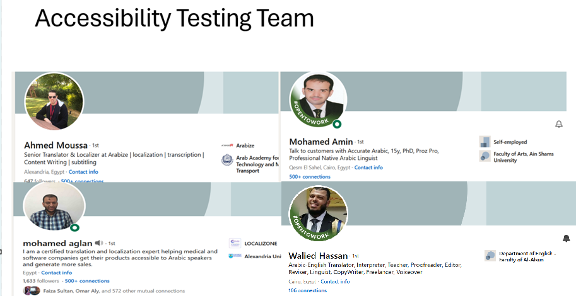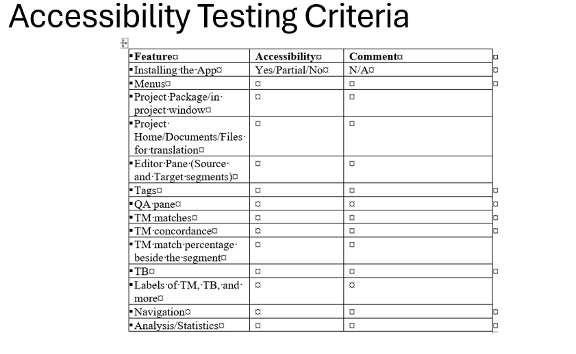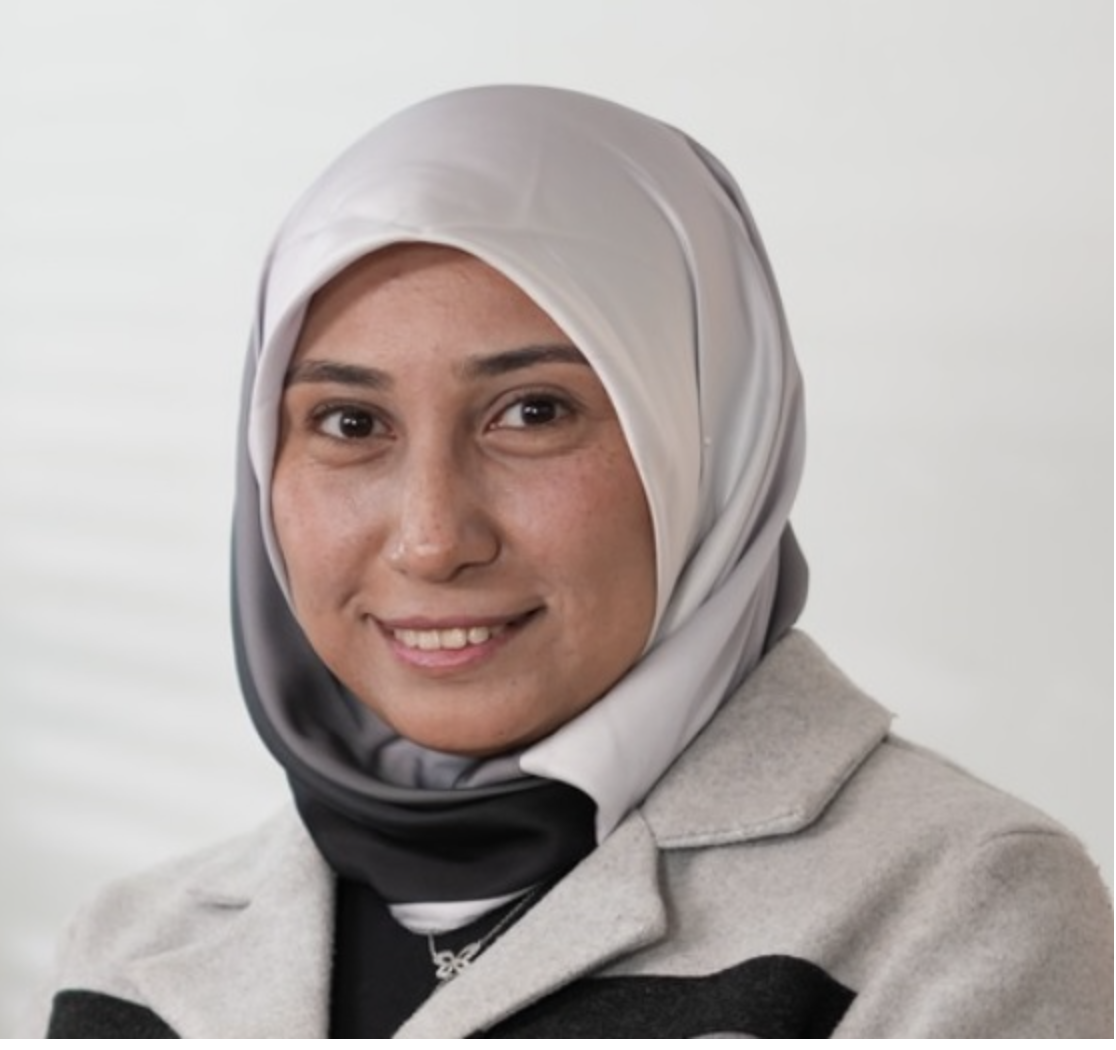- Home
- Resource Center
- Articles & Videos
- Advocacy for Accessibility of CAT Tools for Visually Impaired Translators
28 October 2024
Advocacy for Accessibility of CAT Tools for Visually Impaired Translators
With over 18 years of experience in the localization and translation industry, I've witnessed the significant benefits of computer-aided translation (CAT) tools in improving translation quality and productivity under tight deadlines. This topic became the focus of my Master's thesis in 2019, where I explored both the advantages and disadvantages of CAT tools and identified a major issue: their inaccessibility to visually impaired translators. Since then, I've dedicated my efforts to researching and advocating for the accessibility of CAT tools, aiming to ensure that visually impaired translators can work smoothly in the localization industry. This article outlines my journey in researching accessible CAT tools and my advocacy efforts to encourage developers to improve the accessibility of their tools.
Initial encounters and research
In 2018, while working as a localization section head at Arabize, I met Mohamed Aglan, a visually-impaired translator who excelled in translation tests but struggled with the inaccessibility of CAT tools and with the technical issues of the accessible tool, Fluency Now. This encounter highlighted the employment barriers faced by visually impaired translators due to inaccessible CAT tools. Motivated by this, I documented the issue in my MA thesis and began extensive research on accessible CAT tools that could be used by visually impaired translators.
Researching accessible CAT tools
Since 2018, I have been exploring various accessible CAT tools, training myself in their use, and subsequently training visually impaired translators. My research and advocacy on the accessibility of CAT tools has been presented in various conferences and publications.
Training and academic initiatives
In 2019, while leading the language development team at Arabize's Alexandria office, I trained Ahmed Moussa, a visually impaired student intern, to use a CAT tool in combination with the NVDA screen reader. He successfully completed a 5000-word sdlxliff file, demonstrating the potential of the tool. In 2020, as an assistant lecturer at the College of Language and Communication (CLC), I met Ahmed again and trained him on another CAT tool. His exceptional performance led to his graduation with an A+ in the course. This experience helped me develop a training process for visually impaired translators and an academic teaching process for visually impaired students.
Professional integration
In September 2020, Ahmed Moussa applied to Arabize as a translator. To accommodate his needs, I recommended that he be allowed to use his own laptop with a screen reader for the translation test. During his trial period, we explored the accessibility of various CAT tools. Ahmed's outstanding performance led to his permanent employment and recognition as Employee of the Year in 2022. In January 2023, he was promoted to Senior Translator, illustrating the successful integration of visually impaired translators into professional roles. This success story allowed me to establish a recruitment and workflow process for visually impaired translators in localization companies.
Freelancing and limitations
Under my guidance, Ahmed Moussa started freelancing as a localizer/translator in 2021 and excelled in various projects without disclosing his visual impairment. However, his work was limited to projects using the few accessible CAT tools available at the time.
Advocacy and Industry Collaboration
Since 2020, I have been advocating for improved accessibility in CAT tools. Initial efforts included commenting on developers' posts, urging them to improve accessibility. In 2022, Ahmed Moussa and other visually impaired translators had to reject projects that used inaccessible CAT tools. This prompted me to communicate directly with CAT tool developers to advocate for better accessibility. My efforts have led to successful collaborations.

My accessibility testing team

Accessibility testing criteria documented in a word file and sent to CAT tool developers
What CAT tool developers need to consider in terms of accessibility
Based on extensive efforts to test the accessibility of available CAT tools, I can outline key considerations for developers when creating or upgrading their tools to ensure accessibility for visually impaired translators:
- Menus, icons, buttons, etc. should be labeled for compatibility with screen readers such as JAWS and NVDA.
- Pop-up windows, error messages, drop-down lists, etc. must be easily detectable, readable, and accessible via screen readers and keyboard shortcuts.
- Navigation should be smooth and manageable using keyboard shortcuts.
- Source and destination segments should be easily accessible via keyboard shortcuts.
- Switching between source and target segments should be seamless, with screen readers able to read text word by word or sentence by sentence.
- A shortcut such as Ctrl+G should allow users to jump directly to specific segments for easier translation.
- Segment match percentages and statuses should be accessible and readable by screen readers.
- Features such as analysis, QA panel, TM matches, concordance, etc. should be accessible and readable by screen readers.
- QA checks should be straightforward, with smooth navigation to identify and resolve issues using screen readers and keyboard shortcuts.
- Finalizing and exporting tasks to specific file types should be easily managed by screen readers and keyboard shortcuts.
- Help/documentation should be designed to support the use of CAT tools with various screen readers, such as JAWS and NVDA.
How visually impaired Translators Can be Trained on the Different CAT Tools:
Based on my experience training visually impaired translators on various CAT tools, the following considerations are essential:
- Visually impaired translators should be proficient in using computers, the internet, and Office applications with screen readers like JAWS and NVDA.
- The trainer should be very familiar with the CAT tool being used for the training.
- Zoom is the most accessible platform for online training with visually impaired translators. The trainer must access the trainee’s PC for guidance, and the trainee must share their screen and accept a remote-control request from the trainer.
- The trainer should guide the trainee through each step of using the CAT tool, including:
- Signing into or downloading/installing the CAT tool.
- Opening files for translation.
- Creating or adding a translation memory.
- Importing/exporting TMX files. o Importing/exporting glossaries. o Analyzing files.
- Translating and navigating between source and target segments.
- Detecting and inserting tags into target segments.
- Running QA checks after translation and fixing the errors.
- Exporting translated files in various formats.
- Aligning source and target files.
- If the trainer is unfamiliar with the screen reader shortcuts for the CAT tool due to a lack of help/documentation, they should guide the trainee in discovering the appropriate shortcuts to perform each step.
- The CAT and QA tools that are largely accessible without help/documentation for use with screen readers are the following:
- Smartcat
- Matecat
- Phrase (the desktop version)
- Smartling
- XTM
- Subtitle Edit
- Subtitle Workshop
- Xbench
- Linguistic Toolbox (LTB)
- • The CAT tools that are accessible with help/documentation for use with screen readers are as follows:
- FluencyNow
- memoQ WebTrans 10.1
Ongoing advocacy and future goals
I am trying to create user guides for the researched accessible CAT tools to be used by the visually impaired translators with NVDA and JAWS screen readers. Recently, I have created a user guide for MateCat with NVDA screen reader, posted on LinkedIn and Facebook.
My ongoing goal is to increase the inclusion of visually impaired translators in the localization industry and to ensure that visually impaired students are included in CAT tool courses at universities. I hope to encourage localization companies to hire visually impaired translators by sharing insights on training, recruitment, and workflow processes. In addition, I hope that accessible CAT tool licenses can be sponsored from human rights organizations and foundations, to make these tools more affordable for visually impaired translators and the companies that employ them.
Reference
Refaat, Iman. (2021). “Accessibility in the Computer-Aided Translation Tools for English-Arabic Language Pair.” Transcultural Journal of Humanities & Social Sciences. Print ISSN 4239-2636. Online ISSN 4247-2636. pp. 36-52.
Refaat, Iman. (2019). The Use of Computer-Aided Translation Tools in English to Arabic Translation: A Study in the Light of the Skopos Theory. MA thesis. Cairo University. P 44-45.
Vázquez, Silvia, et al. (2016). “On the Lookout for Accessible Translation Aids: Current Scenario and New Horizons for Blind Translation”, Journal of Translator Education and Translation Studies (TETS), 2016, vol. 1, no. 2, pp. 115-135.
Vázquez, Silvia, et al.(2018). “Is Web-Based Computer-Aided Translation (CAT) Software Usable for Blind Translators?” Computer Helping People with Special Needs. 16th International Conference, ICCHP 2018. Linz, Austria July 11-13, 2018. Proceedings, Part 1, pp. 32-34.

Iman Refaat
Iman Refaat has +18 years of experience in the translation and localization industry. She is passionate about localization, machine translation (NMT, LLM, GenAI), and CAT-Tool-accessibility for the visually-impaired translators. Academically, she is an Assistant Lecturer at the Faculty of Languages and Translation, Pharos University, Alexandria Egypt, and a PhD candidate in the Institute of Applied Linguistics and Translation, Faculty of Arts, Alexandria University, Egypt. Professionally, she is a Language Development Team Lead at Arabize, Alexandria office, and a Localization Consultant, Machine Translation Evaluator, Language Quality Assurance Specialist/Manager, Linguistic/Functional Software Tester, Reviewer, Transcreator, and Localizer/Translator with different international entities like Kayak, Agoda, Recharge, Argos, RWS Moravia, Linguitronics, etc. Voluntarily, she is a CAT Tool Accessibility Advocate who succeeded to communicate with CAT tool developers like memoQ, Smartcat, and Memsource (Phrase currently) to encourage them to improve the accessibility of their tools. Finally, memoQ announced the launch of their accessibility mode in WebTrans 10.1.


